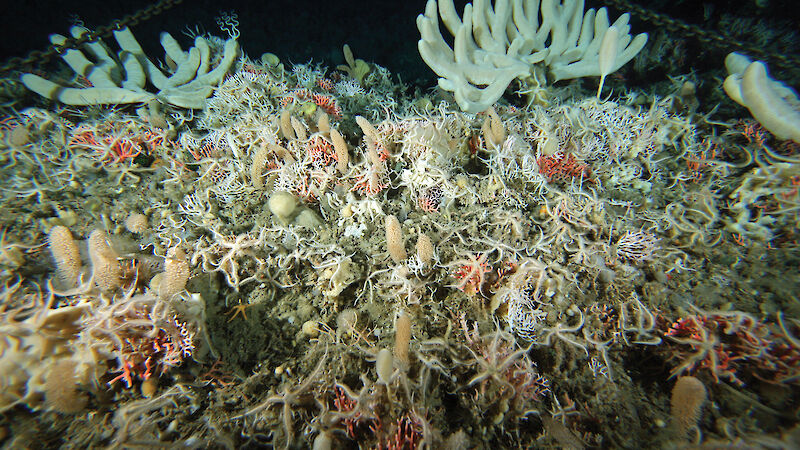Marine organisms that build shells or skeletons from aragonite — a form of calcium carbonate — could disappear from parts of the Southern Ocean within 50 years if carbon dioxide (CO2) emissions continue to increase and cause ocean waters to become more acidic.
Carbon dioxide reacts with water (H2O) to form carbonic acid (H2CO3). This weak acid makes it easier for aragonite to dissolve and therefore more difficult for organisms to form aragonite-based shells or hard skeletons. Cooler water, and deeper water, also increases the tendency for aragonite to dissolve.
Among the organisms affected will be corals and important components of ocean plankton, such as coccolithophorids (a common alga) and pteropods (snail-like molluscs), which are food for many other animals (Australian Antarctic Magazine 12: 24, 2007).
Changes to these organisms and other components of the ecosystem may in turn alter the capacity for the ocean to continue to absorb CO2 from the atmosphere, and so set up a feedback that could exacerbate the rate and impacts of global greenhouse processes.
During the recent Collaborative East Antarctic Marine Census (CEAMARC) in the Southern Ocean, marine scientists observed, for the first time, coral reefs at depths of 700–800m. These reefs exist only 200–300m above the aragonite saturation horizon — the depth where aragonite starts to dissolve. At depths of around 1200m the scientists observed a range of creatures with skeletons made of silicon and protein (such as sponges), and calcite — a form of calcium carbonate that does not dissolve as readily as aragonite.
'We didn’t see any corals at 1200m, although there were brittle stars, which are made of calcite, and plenty of sponges,' CEAMARC Voyage Leader, Dr Martin Riddle, said.
Dr Riddle and other scientists fear that if CO2 concentrations continue to increase, the aragonite saturation horizon will rise towards the surface of the ocean and aragonite will begin dissolving at increasingly shallower depths, leading to the loss of cold water corals initially, and eventually coral reefs in warmer regions.
'Models predict that with the current rate of CO2 production, the aragonite saturation horizon will be at the surface in some parts of the Southern Ocean within 50 years,' Dr Riddle said.
Southern Ocean reefs will be affected first, especially in areas such as the Mertz Polyna, where cold Antarctic Bottom Water forms. This cold, dense, saline water forms near the ocean surface when sea ice is created, and then sinks into the Mertz basin, carrying atmospheric CO2 into the deep ocean.
The ocean acidification threat raises an urgent need to acquire a baseline of Antarctic and Southern Ocean biodiversity information, against which future changes can be compared.
Dr Riddle is now developing an ambitious three year project, beginning in 2011, to map biodiversity around the Australian Antarctic Territory. The project will use trawls fitted with underwater cameras and deployed from ships and workboats, to sample creatures on the Antarctic continental shelf and shallow ocean regions, while terrestrial biologists will sample ice-free areas on the continent.
WENDY PYPER
Corporate Communications, AAD

